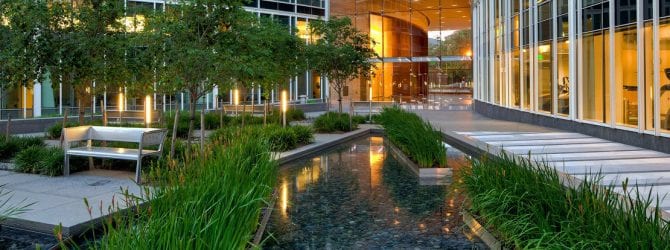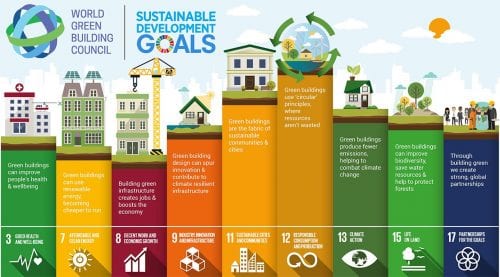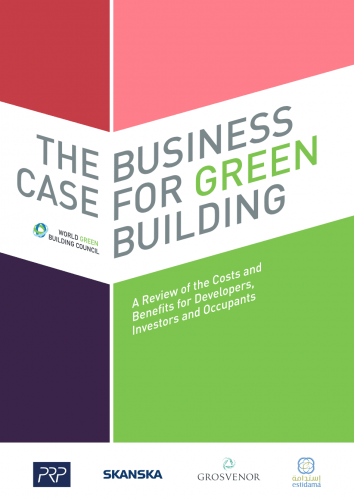
The United Nations recently published a startling new report that cited the worsening effects of climate change. The report noted that if greenhouse gas emissions continue at the current rate, the temperature of the atmosphere could rise by as much as 2.7 ℉by 2040 (Change, 2018). Buildings, which account for 30-40% of CO2emissions, will a have a major impact on this number. Prior to the issuance of this report, the United Nations established its Sustainable Development Goals (SDGs) in 2015 to address social and economic development issues related to rapid urban growth. Of the 17 targets outlined in the SDGs, the World Green Building Councils notes that green building practices can contribute in a significant way (Czerwinska, 2017), which provides a major opportunity for the real estate industry to take the lead in promoting a sustainable future agenda.

Over the past two decades, the emergence of sustainable building practices has led to an evolution in the curation of the built environment. Sustainable development and green building practices are now more popular than ever. The Leadership in Energy and Environmental Design (LEED) certification system, which is one of the most popular rating systems in the U.S. for the classification of green buildings, is now over 20 years old. To date, nearly 100,000 projects around the globe have participated in the certification process (US Green Building Council, n.d.). Since the inception of LEED, additional building certifications such as Energy Star, the Living Building Challenge, and Passive House have emerged to address the creation of more environmentally sustainable buildings.
In spite of this growth, the voice championing the cause of environmental stewardship is not that of the commercial real estate industry, which is chiefly responsible for the creation and management of these buildings. Rather, those that are facilitating the discussion of a sustainable urban future are architects, engineers, and planners. With the need to create more sustainable spaces to address the impact of climate change and occupant well-being, it can be argued that the real estate industry is better suited to take more of a leadership role in the movement towards sustainable environments. This holds especially true for developers who, because of their role in the building process, are uniquely positioned to lead a sustainable building agenda.
The vision for most projects begins with the developer. It is this vision that architects and engineers execute. It is during the design process that architects and engineers have the opportunity to show the pros and cons of certain green building elements. Ultimately, it is the developer who makes the final decision as to the direction of the project and whether to establish a sustainable building philosophy as part of the overall concept of a project.
Some may argue that the responsibility of developers is to ensure positive returns for their investors and that they share little responsibility for the environmental impact of the properties they create. But if we recognize that buildings significantly contribute to climate change, accounting for 30-40% of CO2emissions (Development), outpacing the transportation industry (Agency, 2018) and that human beings spend nearly 90% of their time indoors (Agency, The National Human Activity Pattern Survey, 2001 ), we can see that the real estate industry should feel a moral responsibility to create products that reduce their impact of environmental degradation and enhance personal health and well-being.
One impediment to the real estate industry taking a leading role on issues of sustainable development may be acculturation. Through education and training, planners are taught to consider environmental as well as socioeconomic issues when developing urban plans. Architects and engineers are taught the advantages of using renewable materials and the beneficial effects that exposure to the natural environment has on building occupants. Landscape architects are taught to incorporate natural topography into their designs. In contrast, many in the real estate industry come from the business world where a large amount of training is focused primarily on the maximization of financial returns with little if any, emphasis on sustainability and social responsibility.

But if returns are the primary motivation for real estate developers and investors, the profitability of building green has already been well established. In 2013, the World Green Building Council, in collaboration with PRP Architects, Grosvenor Group, Skanska and the Abu Dhabi Planning Council, published The Business Case for Green Building (Council, 2013). The report cites studies touting the benefits of building green. Among the findings was that green buildings do not necessarily cost more than conventional buildings to build when cost and environmental strategies are integrated early on in the development process. Moreover, green buildings more easily attract and retain tenants and are often valued higher due to higher rental rates, lower operating costs and higher occupancy rates. In 2014, CBRE published the National Green Building Adoption Index (CBRE, 2014)noting the upward trend of green space in the U.S.’s 30 largest office markets.
With the evidence of the economic benefits of green buildings and the significant effects they have on the environment and the people who live and work in these buildings, it is time that the real estate industry takes a more assertive role in establishing the sustainable agenda for the future. As the driving force behind establishing the vision for projects, the potential of the commercial real estate industry to shape the narrative for a sustainable urban future is enormous.
Sources
